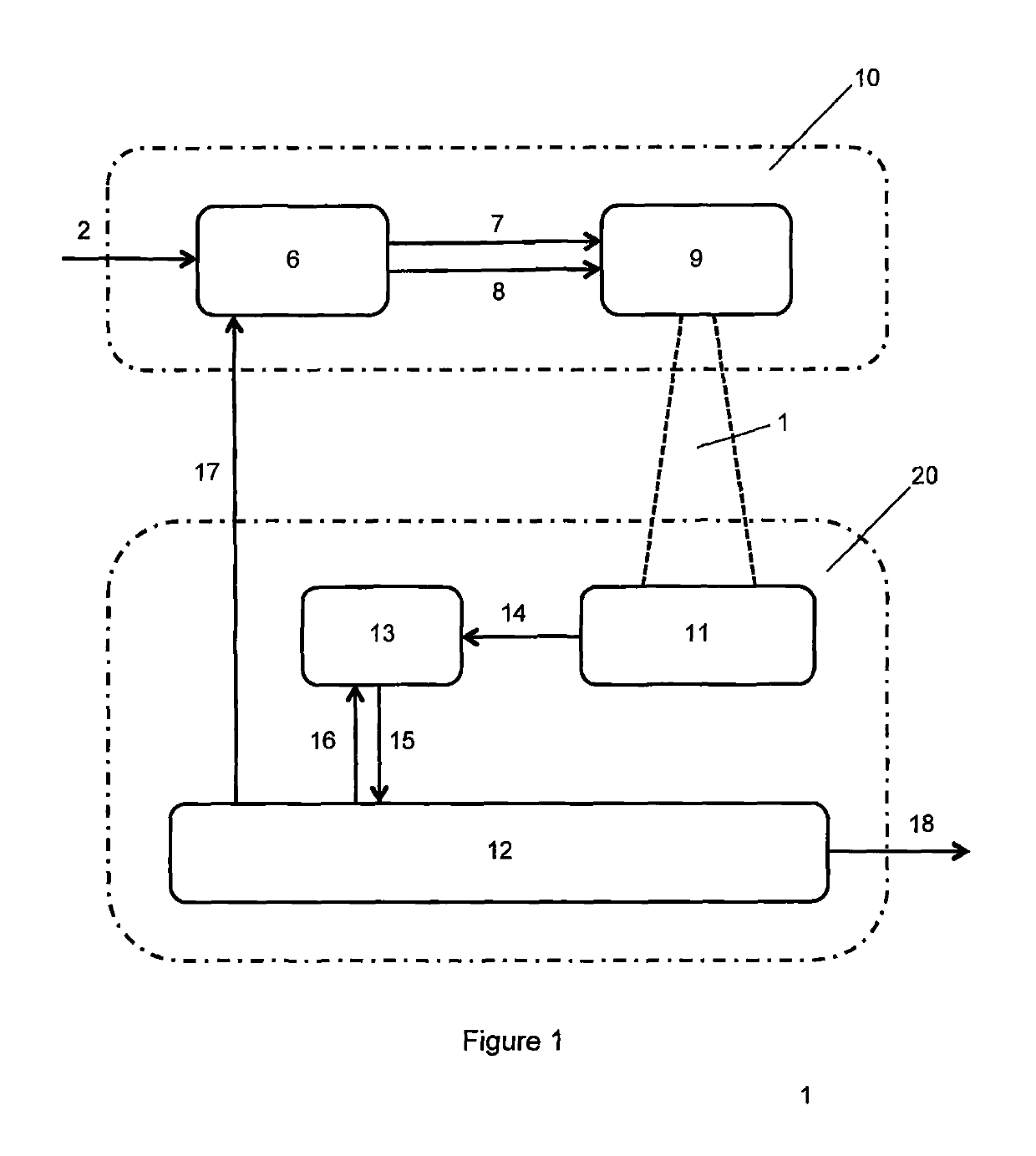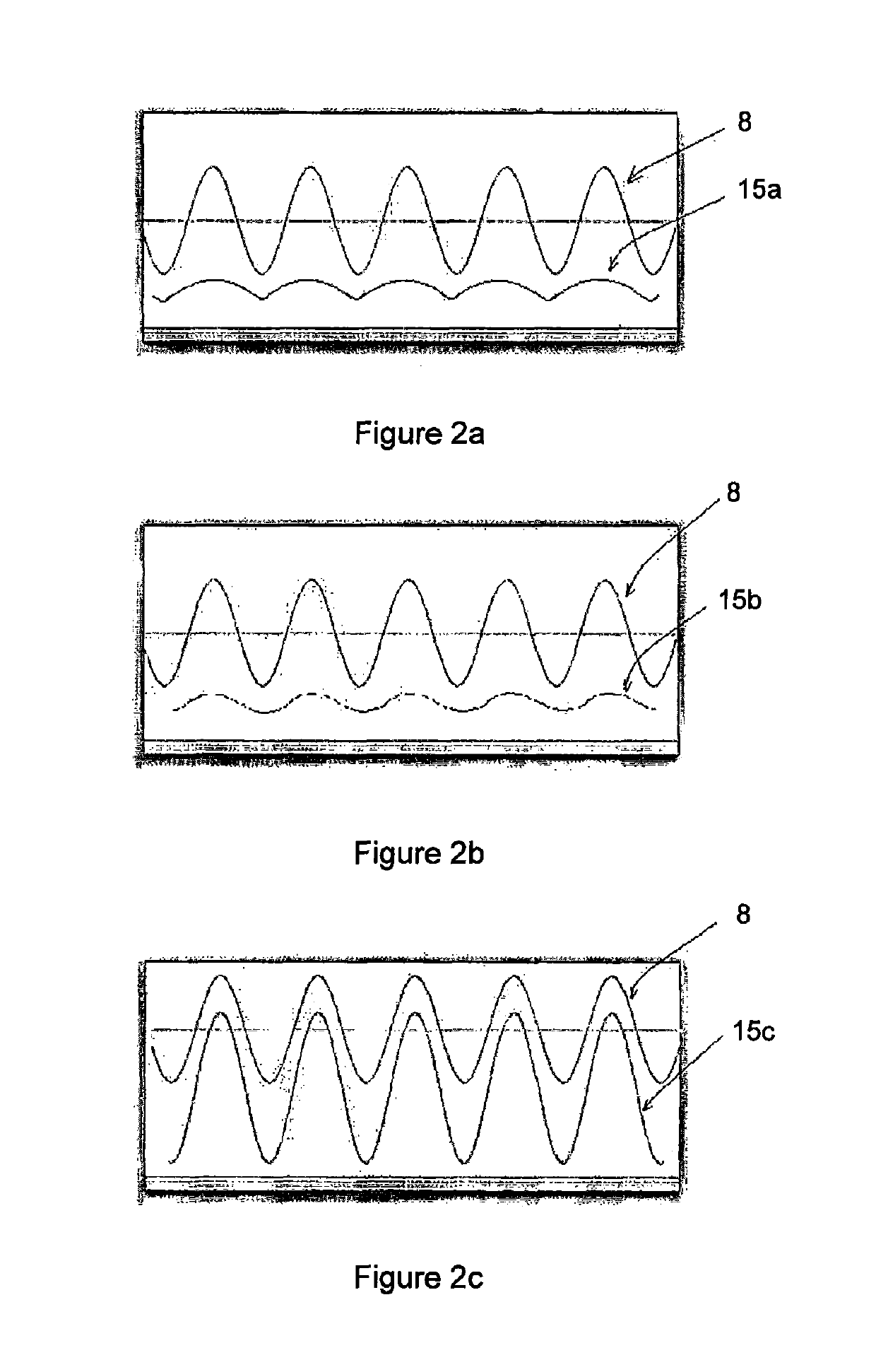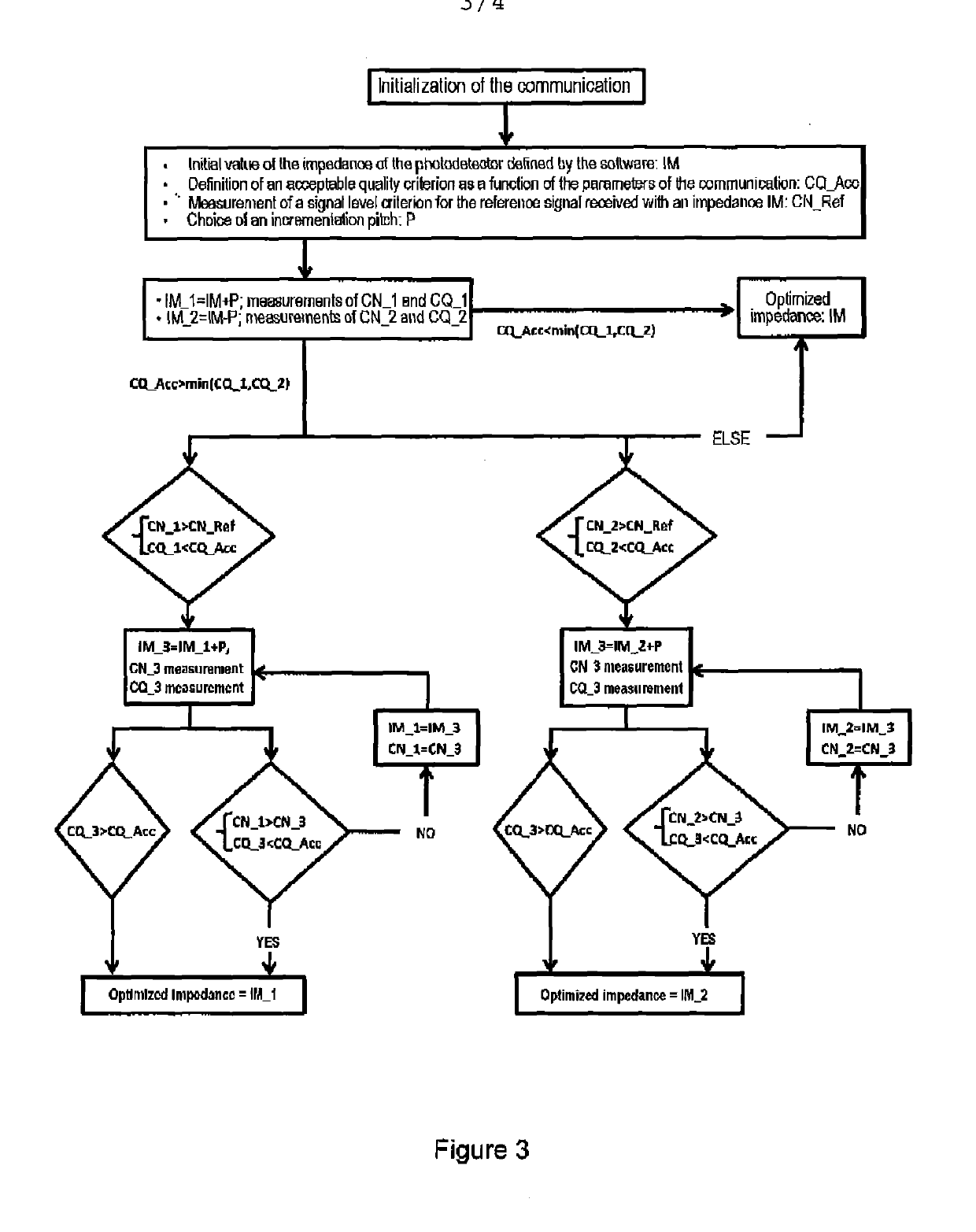Electronic device associated with a photovoltaic module to optimise the throughput of a bidirectional VLC transmission
a photovoltaic module and bidirectional transmission technology, applied in the field of optical communication devices for visible or invisible, infrared (ir) and ultraviolet light, can solve the problems of deterioration of the snr and therefore of the throughput, failure to give satisfactory results in terms of faithful modulation, and inability to process the information that it contains, so as to maximize the throughput of data transmitted
- Summary
- Abstract
- Description
- Claims
- Application Information
AI Technical Summary
Benefits of technology
Problems solved by technology
Method used
Image
Examples
Embodiment Construction
[0062]Refer to FIG. 1, which is a diagram of the bidirectional wireless communication device that is the subject of the invention. This device comprises an emission module 10 and a reception module 20. The emission module 10 makes it possible to encode source digital data 2, for example from the internet, to transmit them in the form of an amplitude—and / or phase-modulated light 1. For this, the light source 9, such as a light-emitting diode, is powered by a control means 6 which generates an electrical signal generally comprising a direct component 7 and an alternating component 8. The direct component 7 is used to bias said light-emitting diode 9 in order to produce the lighting function, and the alternating component 8 is derived from the digital / analog conversion of the source data 2. The reception module 20 is composed of a photodetector such as a photovoltaic module 11 which transforms the modulated light 1 into a modulated electrical signal 14, an electronic means 13 for match...
PUM
 Login to View More
Login to View More Abstract
Description
Claims
Application Information
 Login to View More
Login to View More - R&D
- Intellectual Property
- Life Sciences
- Materials
- Tech Scout
- Unparalleled Data Quality
- Higher Quality Content
- 60% Fewer Hallucinations
Browse by: Latest US Patents, China's latest patents, Technical Efficacy Thesaurus, Application Domain, Technology Topic, Popular Technical Reports.
© 2025 PatSnap. All rights reserved.Legal|Privacy policy|Modern Slavery Act Transparency Statement|Sitemap|About US| Contact US: help@patsnap.com



